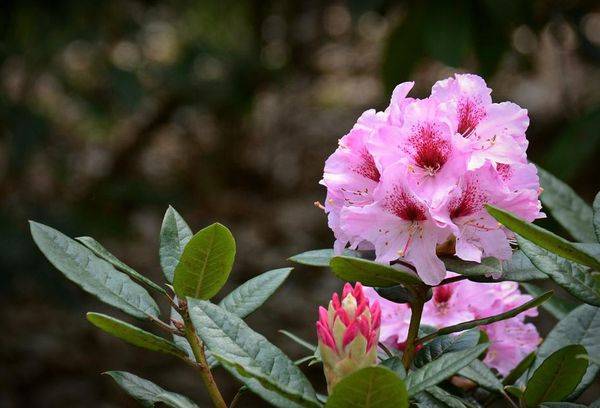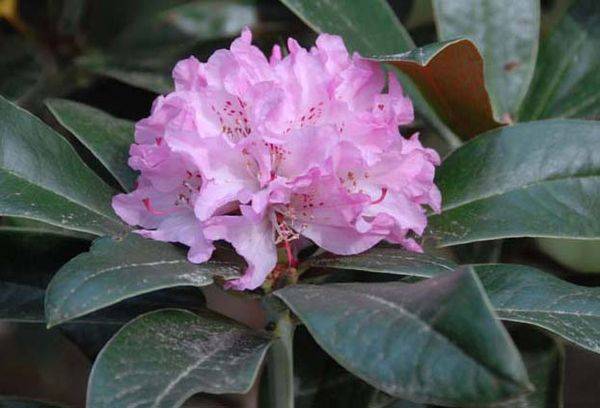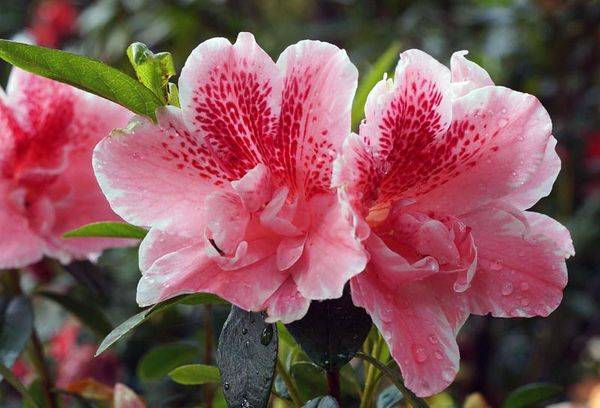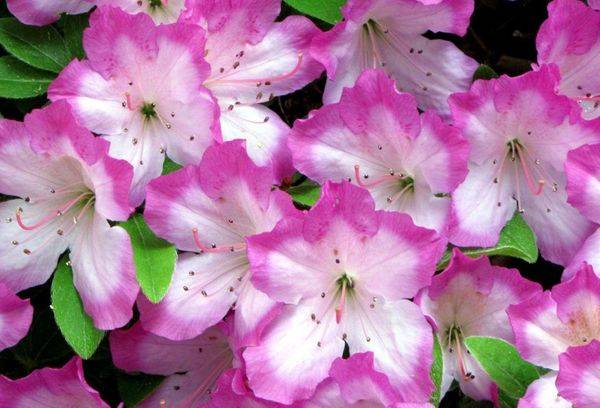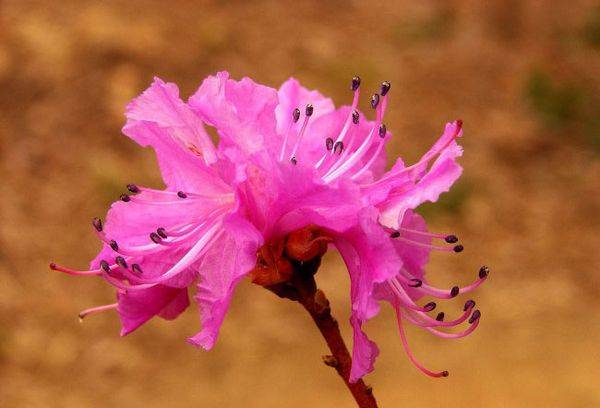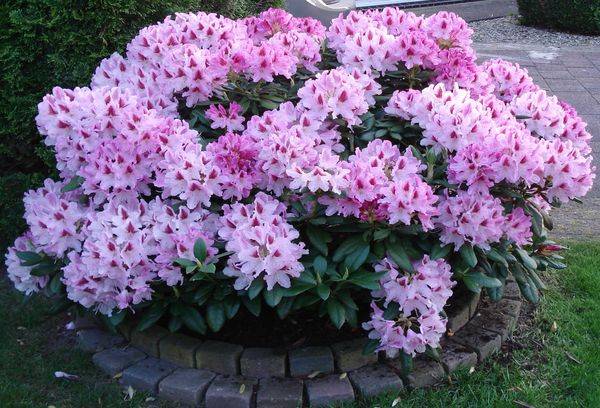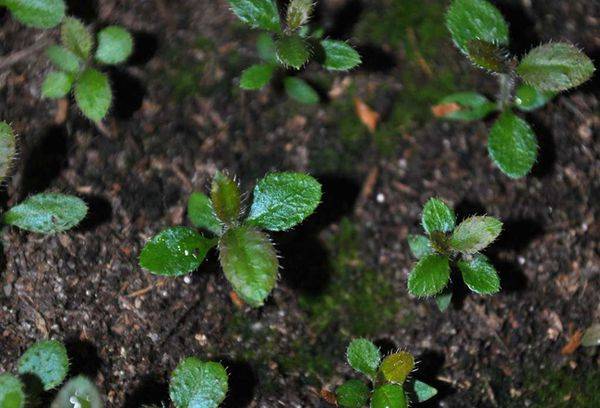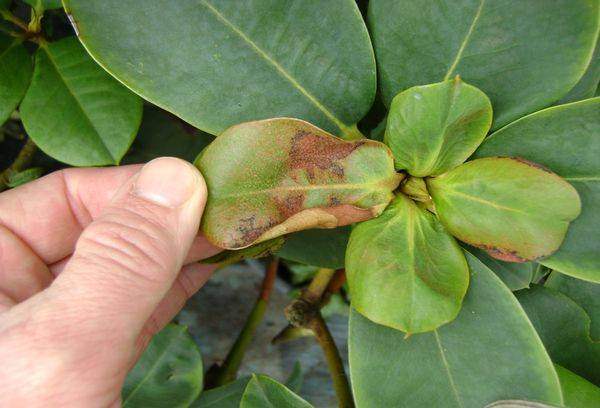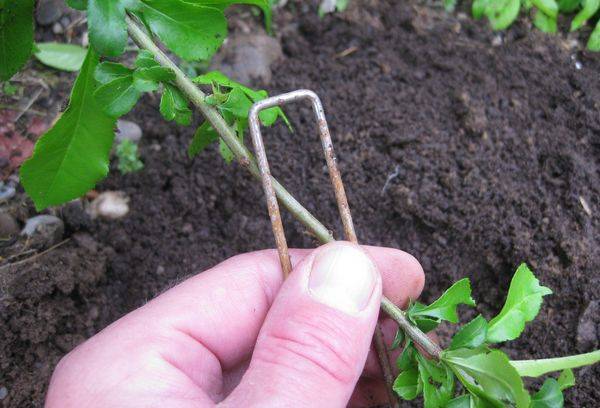Rosewood, or Rhododendron: varieties, care, planting, reproduction
Content:
The most beautiful indoor flower of rhododendron is known in flower growers under the name azalea. Caring for this whim is a lot of trouble. Planting, reproduction, pruning - all actions are performed according to strict rules. If something is not pleasant to a rhododendron, it instantly reacts to it with a disease or even dies. Despite the difficulties of growing, rhododendron continues to conquer the hearts of flower growers with its elegant flowering, which in beauty is comparable to the blooming of roses.
Description
Rhododendron (Rhododéndron) - a genus from the family of heather (Ericaceae). The genus of rhododendrons includes a wide variety of plants, according to various sources, there are about 600 species. Among them, both evergreen and deciduous. Rhododendrons are represented by trees or erect and creeping shrubs that are grown both in open ground and in houses and greenhouses. Indoor azaleas are small bushes also belonging to rhododendrons. This name is partly true: before, azaleas stood out as a separate species. Now they are classified as species of rhododendron, but some gardeners out of habit call all indoor species azalea, and street ones - rhododendrons.
The habitat of the plant is the temperate climatic zone of the Northern Hemisphere (humid alpine forests). Trees from 10 cm to 10 m are found in China, Japan, North America. Some species grow in Australia and New Guinea. In Russia, they live in the Caucasus and the Far East. In the natural environment, rhododendrons grow both in thickets and individually, prefer soil and air humidity, shading.
A feature that rhododendron loved by flower growers is winter flowering. Under good conditions, it lasts two months - from February to March, sometimes in May. Rhododendron blooms annually, but attention and dexterity are required to save the bush for the next season. Rhododendron flowers are collected in inflorescences in the form of a brush or brush. The color palette is from snow-white to deep red, there are shades of pink, purple, violet and even yellow. The shape of the flowers is bell-shaped, tubular, funnel-shaped, some flowers have a pleasant aroma.
The name of the plant comes from the Greek words "rhodon" and "dendron", which means "rose" and "flower". Hence the name - "rosewood." The first attempt to breed rhododendron in Europe was made in the 18th century, but the bushes brought from India did not provide proper care, and they died. In the 19th century, the attempt was successful: the sea captain Welbank brought from India the ancestor of all known varieties of azalea.
Kinds
Azalea is represented by more than 2 thousand species. At home, two types of rhododendron are cultivated:
- Rhododendron Indian, or simsi (Rododendron simsii). This plant is the progenitor of indoor varieties. Its natural habitat is humid mountain forests. Hybrids of Indian azalea differ in a variety of colors: from white and cream, to bright pink and red colors. There are yellow flowers, as well as two-tone.
- Japanese Rhododendron (Rhododendron obtusum var. Japonicum) - the owner of not such large flowers as the Indian azalea (less than 5 cm in diameter). It is less common than simsi, and its cultivation is more troublesome. The plant is sensitive to temperature changes. Flowers - white, lilac, red-orange. An interesting feature of the species: flowers of different shades can be found on one tree.
At room conditions, mainly evergreen rhododendrons are grown, deciduous are less common. The average height of a bush growing indoors is from 30 to 50 cm, but the standard trees sometimes extend up to 1.3 m. Azalea flowers differ not only in color but also in structure:
- simple
- terry,
- flower in flower with simple petals,
- flower in a flower with double petals of more than 30.
Care
Before embarking on the cultivation of azaleas, the flower grower must soberly assess his strength. Are you ready to devote time to a flower, creating the necessary conditions for it? Rhododendron does not forgive mistakes: it can bloom in a week, drop buds or even dry out. To save him is an even more difficult task.
Interesting fact
The older the azalea, the more spectacular and magnificent it blooms.
How to tame rhododendron at home? Start by posting it:
- The plant does not like bright light. Place it in a place protected from direct sunlight. Suitable northern or western windowsill, loggia.
- purityis.decorexpro.com/en/ recommends avoiding places adjacent to radiators and radiators. Dry air is harmful to the plant.
- Starting in April, begin to accustom the rhododendron to the air, taking the flowerpot out onto the street. Place the plant in the shade of trees or under a canopy. In the fresh air, the bush will stand comfortably until the end of August.
- The room where the rhododendron lives should be regularly ventilated. But sharp temperature fluctuations must not be allowed, this will lead to the death of the bud ovaries.
For a year, rhododendron goes through the stages of growth, flowering and dormancy. Each period requires a different care. And the azalea needs to be prepared for flowering. Buying rhododendron in stores, people often throw it away after flowering, they consider it a bouquet plant. But if everything is done correctly, then it will be possible to admire the winter flowering of rosewood for more than one season.
Humidity, watering, fertilizers
The flowering of rhododendron is poorly affected by dry air and high temperature. Allowed temperatures up to + 19 ° C, best of all - from 10 to 15 degrees Celsius. Flowering will be long only in a cool place: at temperatures up to + 12 ° C - 2 months, at temperatures up to +19 - 2 weeks. In autumn, during the formation of buds, it is better to lower the temperature to + 6 ° C, and raise it just before flowering. To neutralize the effect of heating systems, you need to spray rhododendron in the evenings with soft water at least 2 times a week.
Rhododendrons love high humidity. During the growth period, abundant watering is required; during the dormant period, it is reduced to moderate. The soil in the pot needs to be completely moistened and not allowed to dry out. Water the plant in the morning with soft filtered or settled water, directing the stream under the root. If part of the water has not been absorbed into the soil, it must be drained from the sump after 15 minutes. So that the rhododendron is not hot, it is poured over with melt water, and pieces of ice are laid out on the edges of the pot. Successful move - place a container with water or wet moss near the pot.
If you accidentally allowed the soil to dry out in a flowerpot with a rhododendron, resuscitation will be required. The first way: put the pot in water for 4 hours. During this time, the plant and the soil are sufficiently saturated with moisture. After 3-4 days, normal watering resumes. The second way is to arrange a plant for souls. Water temperature - up to + 30 ° C.
Tip
Water the plant only with soft, settled water.
A special feature of rosewood care is daily top dressing. Especially for rhododendron liquid complex fertilizer is sold. During each irrigation, a certain amount of fertilizer is added to the water. This amount is calculated by dividing the monthly rate by the number of irrigations. When the kidneys are formed, it will not be superfluous to add classic dressings, making them 1 time in 20 days.
Bush formation, transplantation, reproduction
To maintain abundant flowering, you need to cut flowers immediately after they wither. After the end of the flowering period, all weak elongated shoots are removed.Healthy branches are cut by 5 cm. Such pruning will help form new strong shoots of rhododendron. After this procedure, you need to transplant the plant into a new larger pot. After 2-3 weeks, when 3 pairs of leaves appear on young shoots, they need to pinch the tops. The procedure is repeated until the buds appear (approximately mid-summer), then pinch the side shoots.
Transplantation is needed for young plants annually, for adults (after 3 years) - every two years. Signs that it is time to transplant rhododendron: the roots braid over a lump of soil, moss appears on the surface. For planting, it is better to purchase special soil for azaleas, since it is difficult to make it yourself: you need a mixture of coniferous land, peat and sand. A pot for a plant is better to take ceramic, microscopic pores in its walls will provide air access to the roots. Do not forget about the drainage layer at the bottom of the pot.
Propagation of rhododendrons is carried out by stem cuttings. The time for their separation is summer, the temperature is from +20 to +25 degrees. Cuttings are selected 6 cm long, semi-lignified, 4-5 months old, and cut at an angle. Before planting, the lower leaves must be cut from the cuttings; the cut is processed with a growth stimulator. Seedlings are placed in the soil 1-2 cm, covered with a film and left to root for 1.5 months, periodically ventilating. When it takes root, the plant is transplanted into the soil for azaleas.
Growing difficulties
Florists face the following problems:
- Yellow leaves. Most likely, there is not enough water in the ground. In addition, rhododendron loves lemon: add a couple drops of juice when watering.
- Short flowering. Possible causes: lack of moisture in the soil, low humidity, direct sunlight. What to do: increase watering, spray the bush, put it away from the heating system.
- The leaves are wrinkled. This is due to a lack of moisture, high temperatures and poor shading. Solution: increase watering, increase air humidity and shade the plant.
- Septoria is a fungal disease. A sign is rusty or brownish-gray spots on the leaves, in an advanced situation - the death of foliage. The plant will save spraying with a 1% solution of Bordeaux fluid.
The rhododendron growing in the apartment scares away small insects like ants. But some pests still encroach on the rosewood:
- Shaggy aphids. First settles on young shoots, then moves to the leaves. The plant can be easily treated: wipe it with a sponge dipped in soapy water. After a week, it is allowed to spray the bush with soapy water or pharmacy tincture of calendula.
- Mite Tarzanemus - a more serious problem. It is difficult to notice with the naked eye. Signs that the tick has settled on the buds, flowers and leaves: leaf plates brighten, shoots curl. The dominance of ticks leads to a lack of flowering. Folk method of pest control: prepare an infusion of wood ash (for 500 g of ash - 10 l of water). Let the mixture brew for a day, strain and spray or wipe the bush. Repeat the procedure once a week, three treatments are enough.
When caring for rhododendrons, one must take into account that their stems contain toxic substances. Wear protective gloves and restrict access to the azalea flower pot to children and pets. If you eat a leaf, then lacrimation, poisoning, vomiting will occur. Some flowers have a strong odor, which often causes allergic reactions: skin rashes, headache.
Rhododendron in the open ground
Indoor azaleas and garden rhododendrons are similar in agricultural technology:
- For planting in open ground, a shady place is chosen, preferably near a pond or stream. If there are no reservoirs in the area, then air humidity must be maintained by placing a basin of water next to the tree. With a close occurrence of groundwater, the plant is planted on a raised plot of land.
- Garden rhododendron needs morning watering and evening spraying, as well as indoor. In dry weather, it is advisable to add up to 10 liters of water under each bush.
- In rainy autumn weather, watering is not needed.
- The soil can not be loosened so as not to damage the roots. Weeding is carried out only manually.
- In the middle lane for the winter, rhododendron is covered with burlap. It is removed in the spring after the snow melts. In warmer areas, a rosewood winter without shelter.
Interesting Facts
A few facts that rhododendron really won the hearts of plant life lovers:
- It is called not only azalea, but also an alpine or English rose.
- There are varieties with flowers up to 20 cm in diameter.
- Rhododendron is a medicinal plant, used in folk and traditional medicine. The main 4 species with healing properties: golden, Caucasian, Sagan-daila and Daurian rhododendrons. In Tibetan folk medicine, the plant is an anti-inflammatory and antifungal, as well as a tonic. Leaves, flowers and stems are used.
- In different countries there is a unique culture of growing rhododendron. So, in India, meter-tall lush flowers are cultivated. And in Japan, a whole trend in the art of bonsai appeared - the formation of amazing trees from rhododendron bushes.
- Rhododendron in the wild is an early spring honey plant.
- Some gardeners are sure that the plant in the house has its own symbolism. Rhododendron has a powerful positive energy, maintains harmonious relationships in the family, restores mutual understanding after minor quarrels. It is recommended to cultivate people with increased fatigue, sleep problems.
Growing rhododendron both at home and in the garden is a difficult task, but fascinating. For the sake of chic, lush buds, it's worth the work. With proper care, azalea becomes the decoration of any room. Blooming rhododendron in the house is a sign of high skill of the grower.
